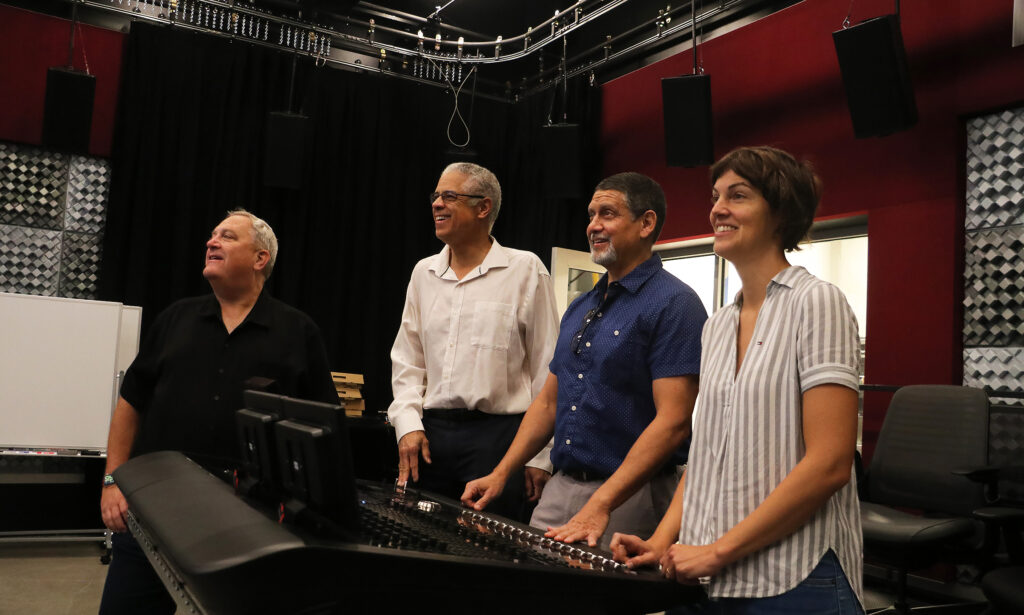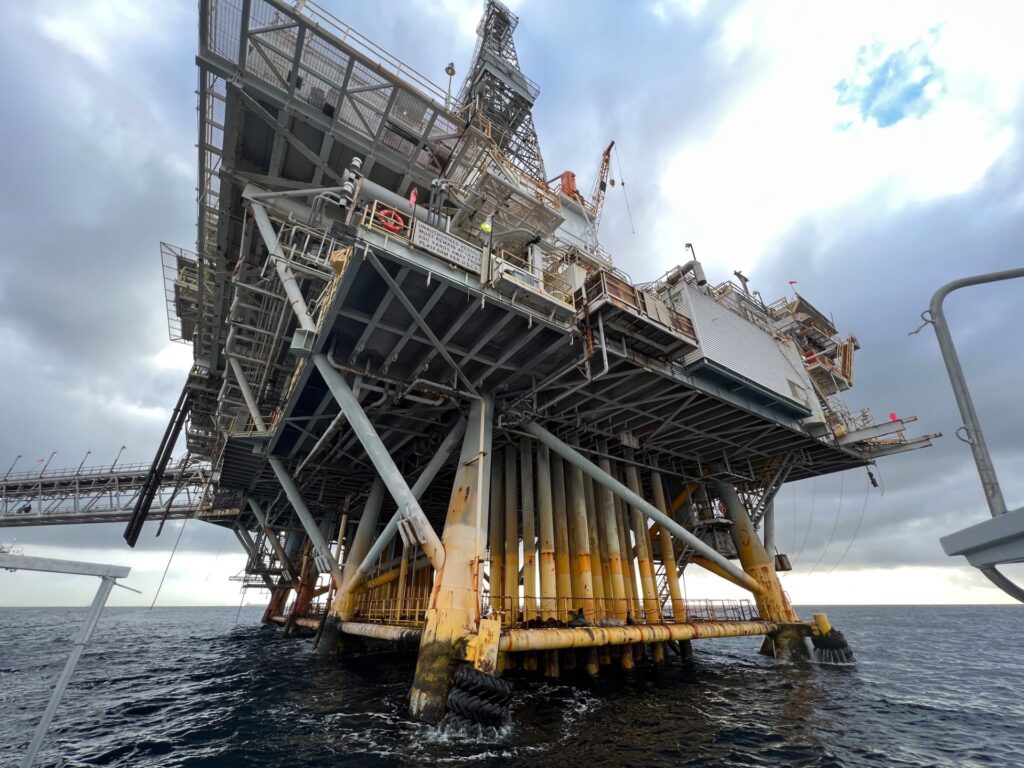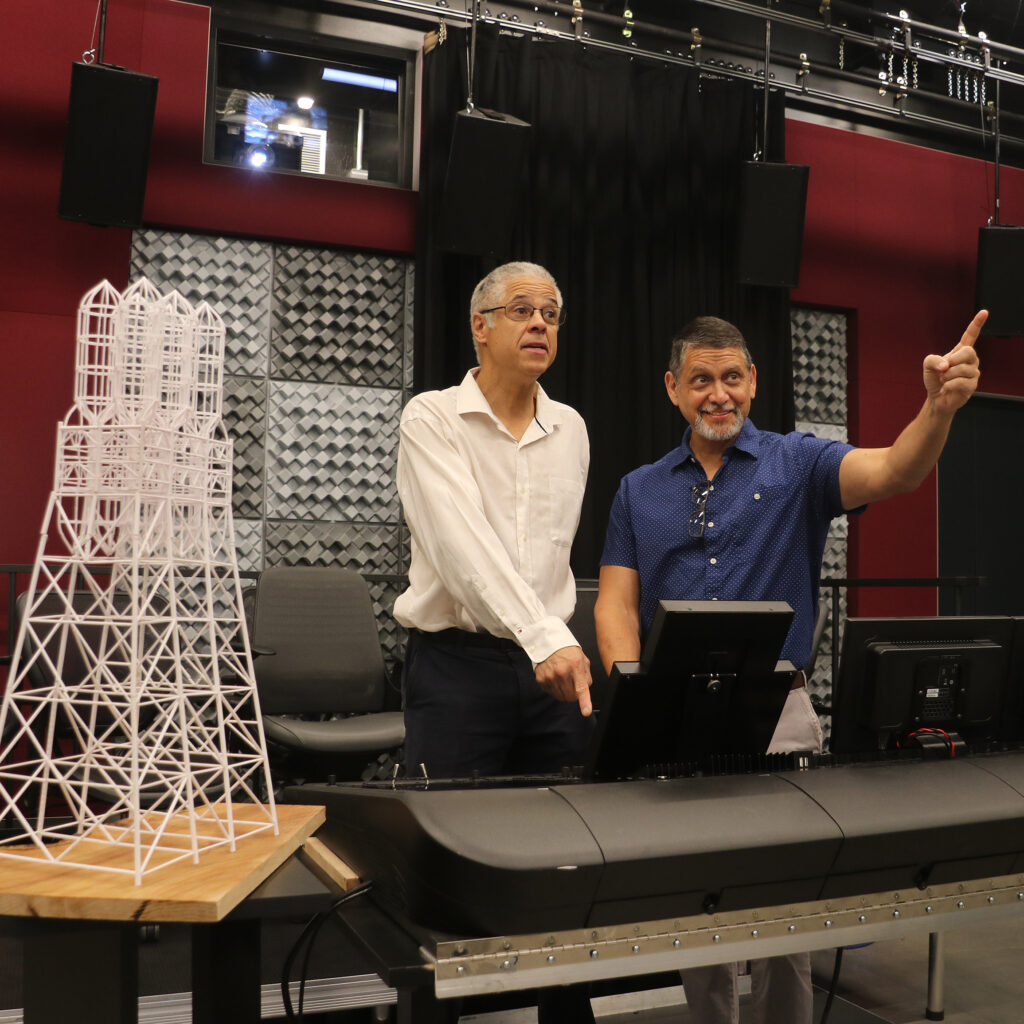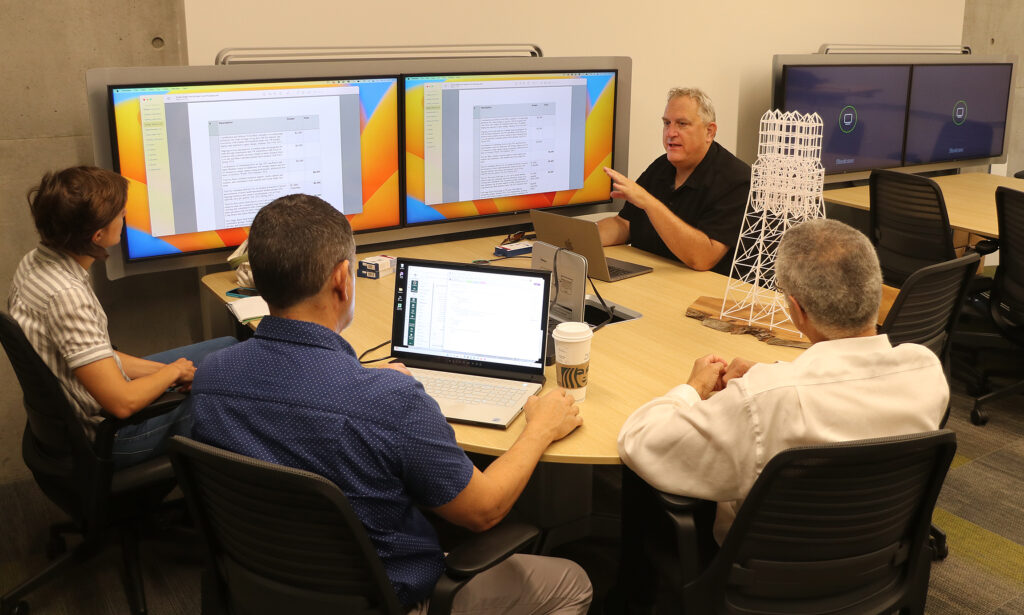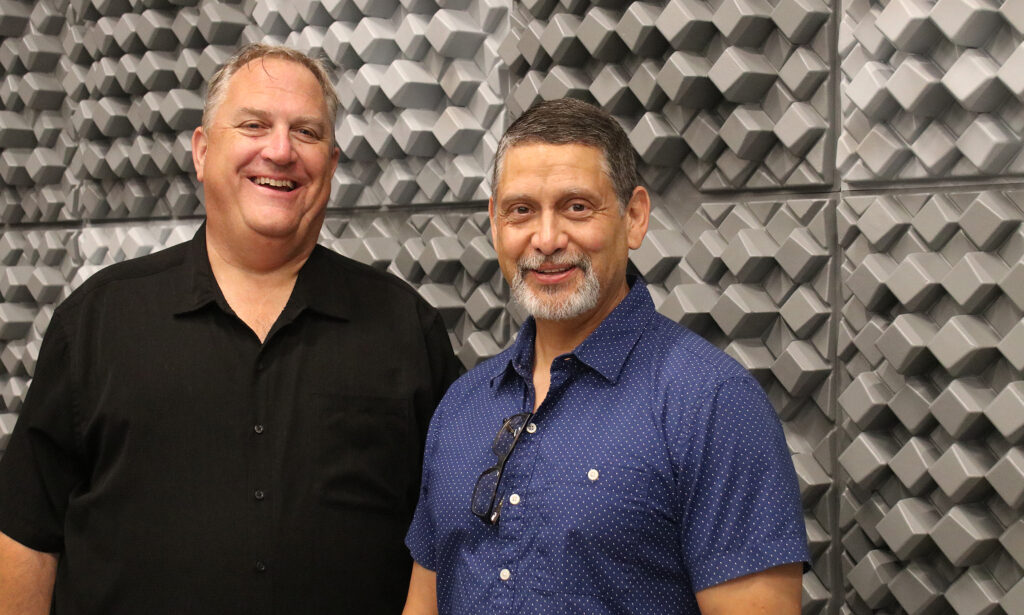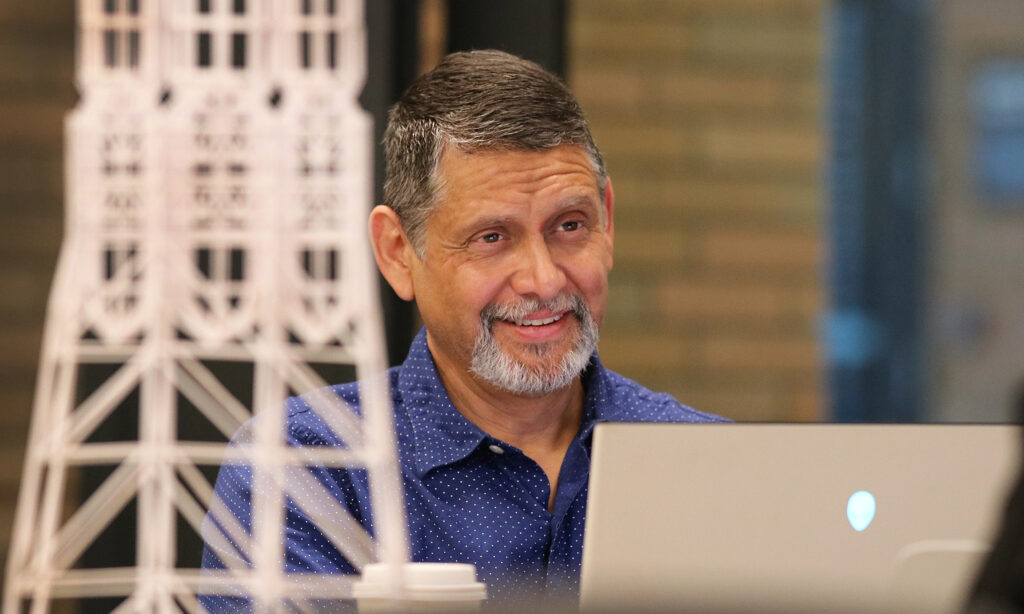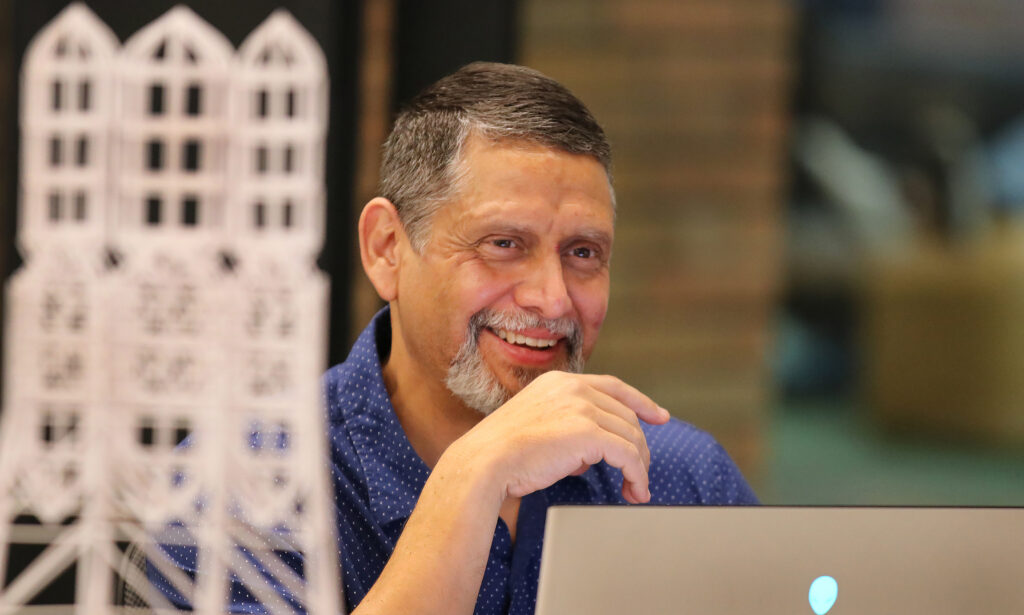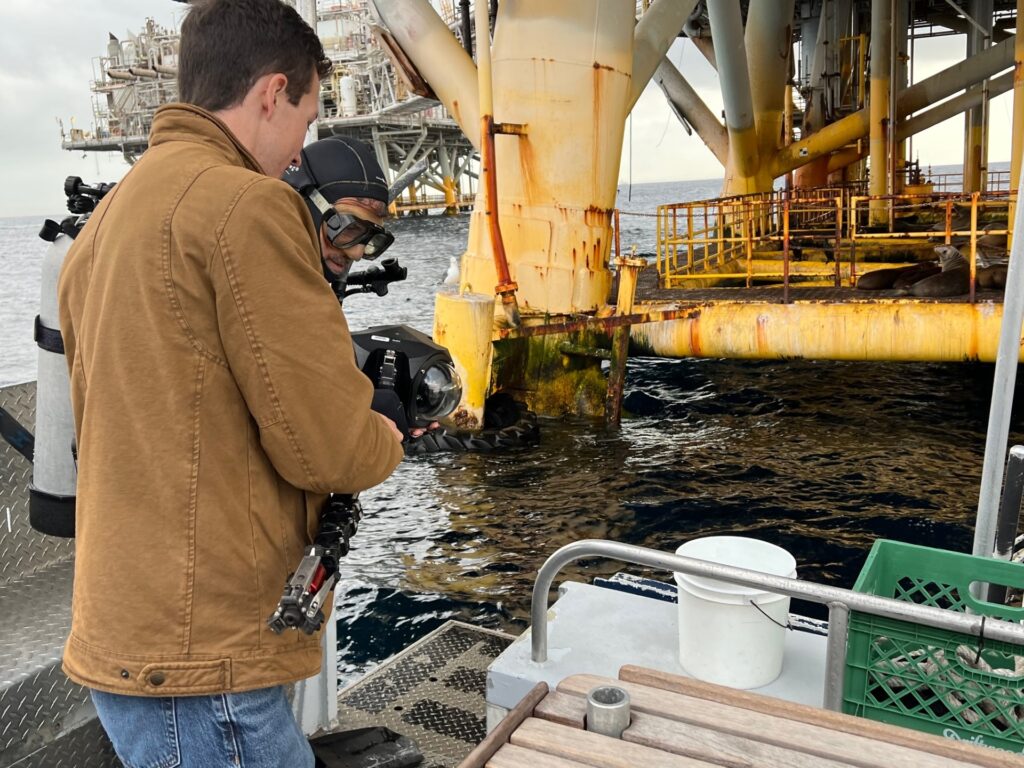Professors Revealing Hidden Sea Creatures and their Unlikely Home: Offshore Oil Rigs
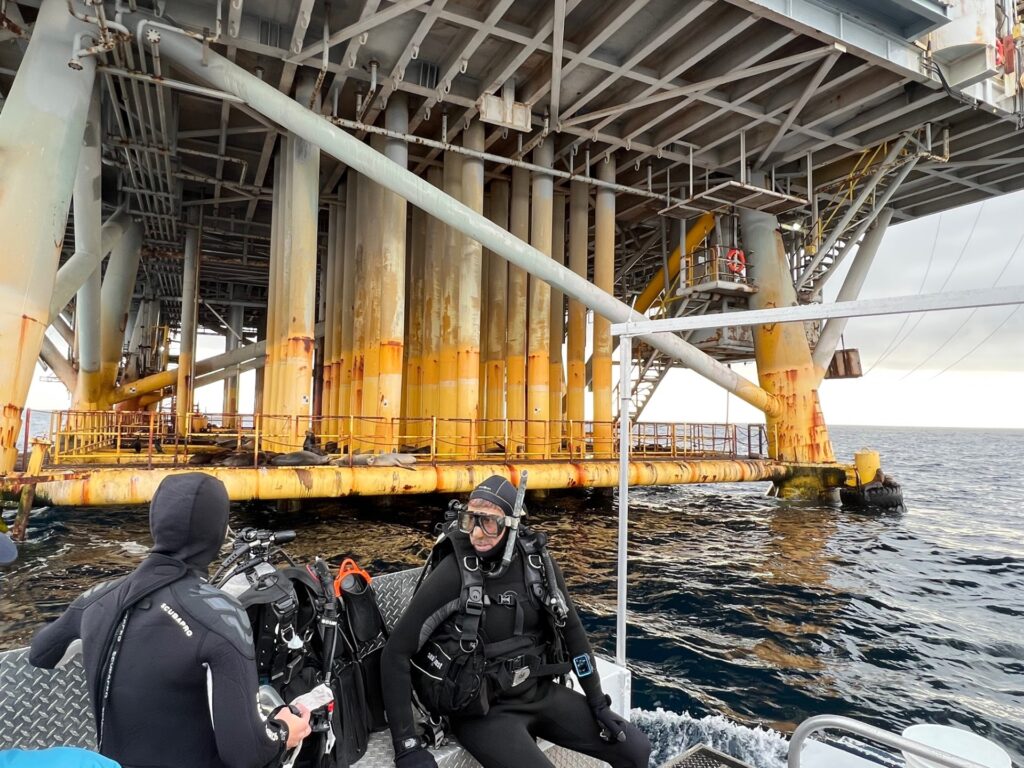
Cal Poly professors, researchers and sound designers have united for an extraordinary collaboration to showcase one of the richest aquatic habitats on Earth that could be in danger of disappearing if lawmakers pursue removal of the reef system.
The home for tens of millions of corals, sponges, crabs and fish isn’t in Australia or Indonesia but connected to the base of massive oil rigs off the Santa Barbara coast.
“This level of sea life doesn’t exist in many places,” said computer science Professor Michael Haungs. “Each abandoned oil rig has over 1 million sea animals dependent on the structure for their survival.”
Over decades, ecosystems have built up around the intricate scaffolding that sinks 100 feet below the surface, hosting 1,000% more fish and other sea life than natural reefs or estuaries, according to results of a 15-year study.
State officials are at the point in the decommissioning process where they must decide whether to completely remove the 24 abandoned rigs – and their sea creatures – or chop off the top of the rigs, leaving the undersea portion intact to preserve the vibrant habitat.
“Something has to be done with the offshore platforms that are out of service, but we want to make sure the public is informed about the ecosystems that develop around artificial reefs before decisions are made,” Haungs said.
Haungs and professors David Gillette (English) and Thomas Fowler (architecture) have launched a large-scale research project – “Ocean Sight One: Revealing the Hidden Ecologies and Histories of California’s Ghost Ship Reefs” – to make the hidden marine life accessible to the public through an exhibit that will highlight the history and biodiversity of the rigs before taking visitors on a virtual voyage to the bottom of the sea.
They can’t bring people to the reefs, but they can bring the reefs to the people in what will be the debut media project for the Frost Center.
Charting a course
Haungs, Gillette and Fowler combined forces and secured grant funding in spring 2022 to begin work on the future exhibit planned for the Frost Center’s new Expressive Technology Studios space.
Funding from the Hearst Foundation expired in August, but the team will remain invested in Ocean Sight One for five to eight years, charting and presenting the decommissioning process from start to finish.
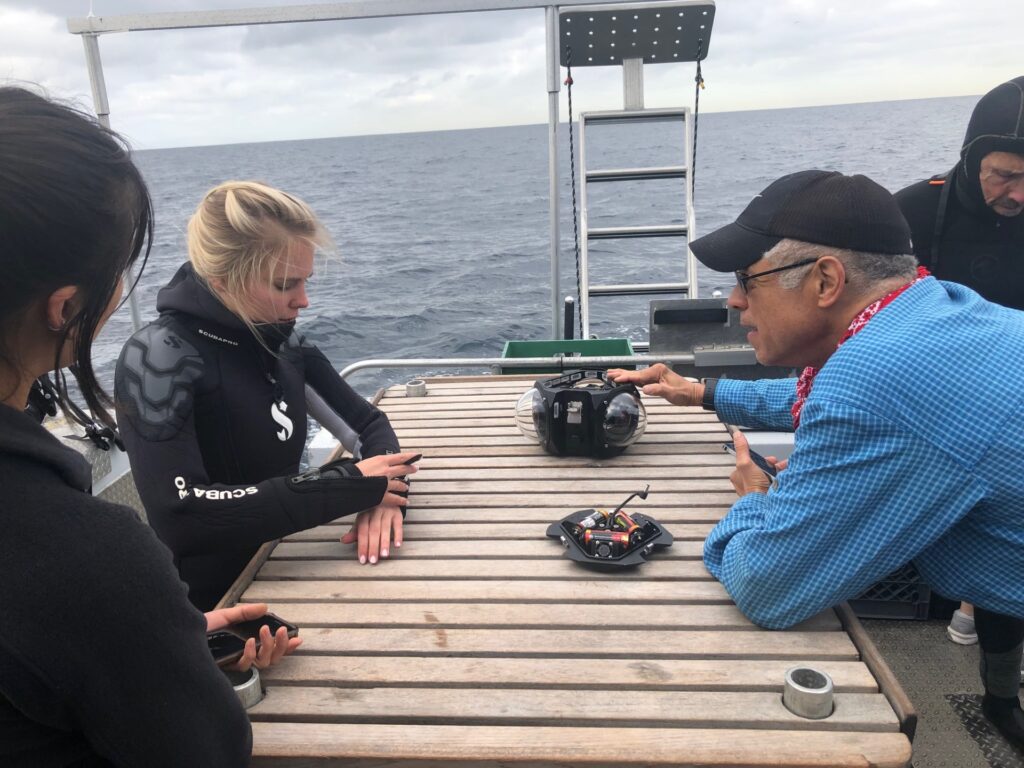
“We don’t want to take a side but want to make people aware of the beauty of the marine life with an engaging exhibit,” said Gillette, who runs the Liberal Arts and Engineering (LAES) program with Haungs. “We think most people will be interested in preserving sea life, but that’s up to the state.”
This year, the Cal Poly professors aim to secure longer-term grants to remain connected with Blue Latitudes – a marine environmental firm – and the nonprofit group’s work with artificial reef ecologies.
Blue Latitudes has diving rights along California’s coast, enabling them to collect high-definition, 360-degree underwater footage that will play a major role in the Frost Center exhibit.
Fowler accompanied Blue Latitudes divers on one of their boat trips to the base of a Long Beach rig, which is architecturally similar to those off Santa Barbara, as he marveled at the scaffolding-turned-reef.
“Dolphins followed our boat, and it was pretty magical,” said Fowler, noting the happiest fish in the world are sustained by artificial reefs where fishing is not allowed and ocean ecologies are left undisturbed.
Fowler, who has taught architecture at Cal Poly for 30 years, has integrated the rigs into two of his design studio courses, where students developed digital and large scaled models of the 200-foot-tall structures for analysis in the design studio and possible inclusion in the exhibit.
Constructing an exhibit
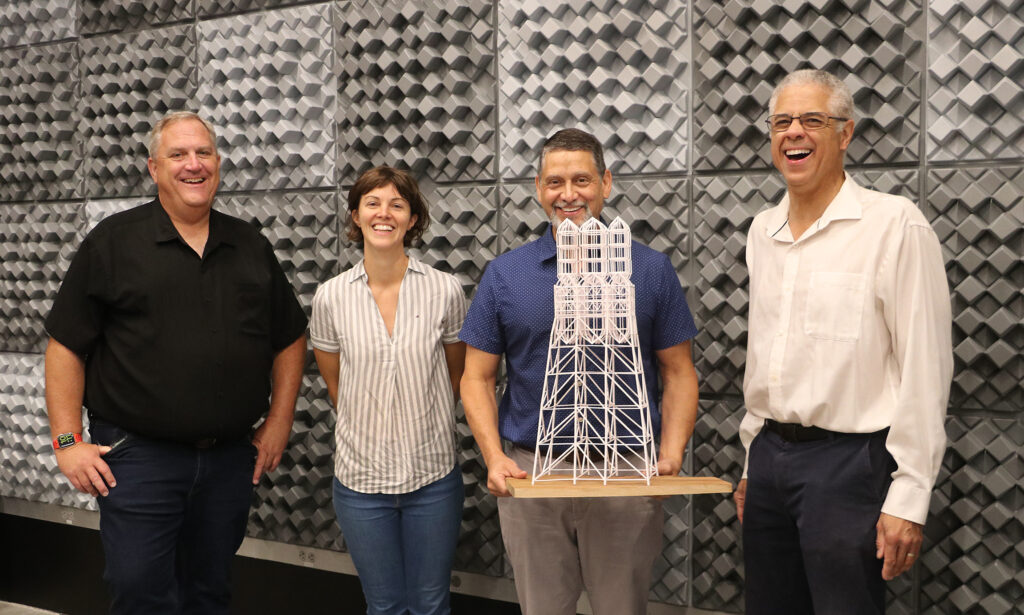
Fowler, Haungs and Gillette built an interdisciplinary student leadership team last year to oversee the visual and auditory components that will make up Ocean Sight One.
Recent LAES graduates Kenzie Rutherford and Lexie Sakoda served as exhibit co-leads, mapping out elements for the studio space, including a fish flipboard highlighting the species under the platforms; 3D models from Fowler’s students with information about each rig’s age and production; and immersive, 360-degree video of a dive under the rig.
“The whole idea of the exhibit is to view the rig from afar as you enter the room, then get closer to the structure and finally take a virtual dive underwater to learn about the ecosystems and decommissioning process,” Sakoda said.
Prior to Ocean Sight One, Sakoda had minimal knowledge about the rigs and no idea the reefs existed, which changed after research that included the Blue Latitudes boat trip off Long Beach.
“I had never been that close to a rig,” she said. “I could see so many sea lions, barnacles and scallops; there is an entire animal kingdom living under the structures.”
Creating a soundtrack
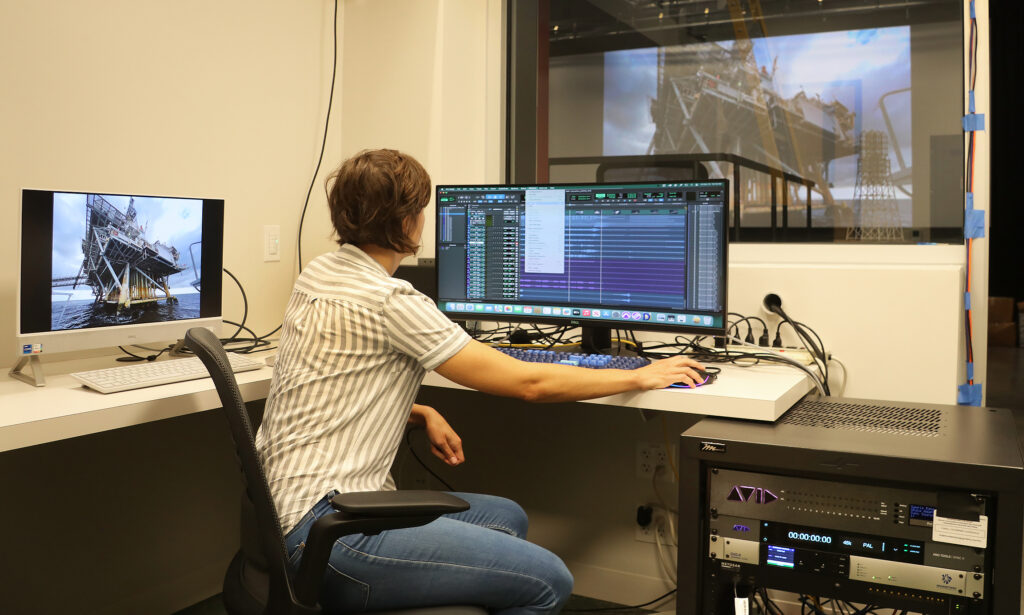
Visual elements will be enhanced with a 3D sound experience supported by the Dolby Atmos system in the Expressive Technology Studios space.
Music Assistant Professor Julie Herndon, a major collaborator on Ocean Sight One, is overseeing the sound design with help from music major Alyse Murray.
Herndon and Murray visited Pismo Beach, Morro Bay, Montaña de Oro and the Cal Poly Pier in Avila Beach to record birds, seals, rush of the ocean and even the sound of silence using multiple microphones including one made to record underwater.
“When you are watching a movie without sound, there is a level of detachment,” said Murray, another member of the student leadership team. “Sound makes an experience more intimate and personal.”
Murray was initially attracted to the project for the chance to collaborate with students outside the Music Department, but an unexpected bonus was a newfound appreciation for ocean conservation.
“I have something new that I care about,” she said.
She worked in this studio this year composing sound effects for the mixed reality experience that will cap off the exhibit.
Concluding with virtual reality
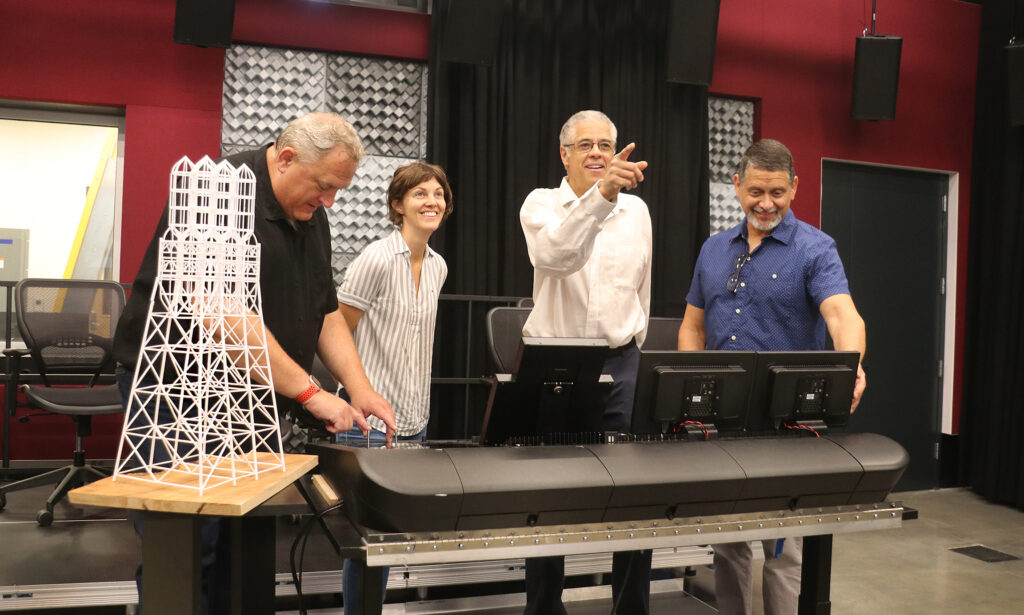
Visitors will leave the collective studio space and don VR headsets to take individual journeys, engaging with activities invented by recent computer engineering graduate Lucas Reyna.
“Ending the exhibit with VR will augment everything people just learned about through the physical exhibit,” said Reyna, now working at software development company Niantic. “VR will leave a memorable impact.”
Three activities will allow people to feed seals from a boat next to the rig; dive underwater to collect different species of fish; then become virtual rockfish trying to release eggs into the safe confines of the rig. A fourth activity will allow people to watch the 360-degree underwater footage from Blue Latitudes on their phones.
Reyna and his friends tested early versions of the games, and all were entertained.
“It was pretty incredible, grabbing fish out of the bucket to toss them to the seals,” he said, adding the goal is for students this year to get the games to a fully functional state.
While the aim of Ocean Sight One is to engage and inform members of the public about the rigs and reefs, team members don’t want to see the habitat disappear.
“Due to our complex history with the oil industry and the massive oil spills that have impacted our entire coast, some people advocate for complete removal of the structures regardless of the effect that may have on marine life,” Gillette said, “but there are better solutions for our oceans and the communities that live alongside them.”
A joint effort
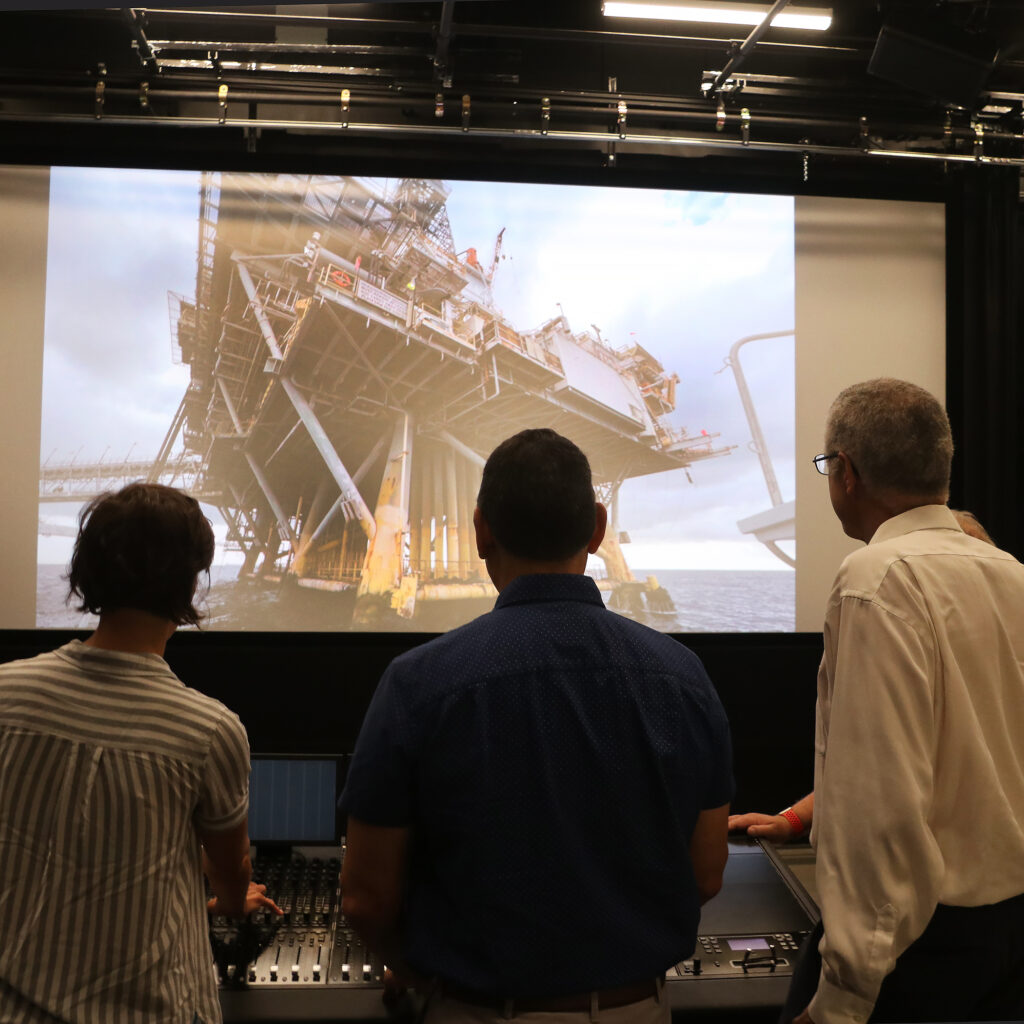
The Ocean Sight One project exemplifies collaboration, bringing together faculty and students from three distinct colleges to contribute their expertise and perspectives.
Professors Michael Haungs (computer science), David Gillette (English) and Thomas Fowler (architecture) enlisted music Professor Julie Herndon and an interdisciplinary student team to bring the future Frost Center exhibit to life.
“It was valuable to have a diversity of majors on the project,” said computer engineering graduate Lucas Reyna. “While we had different skills sets, we all shared a passion for the environment and desire to see a better world.”
